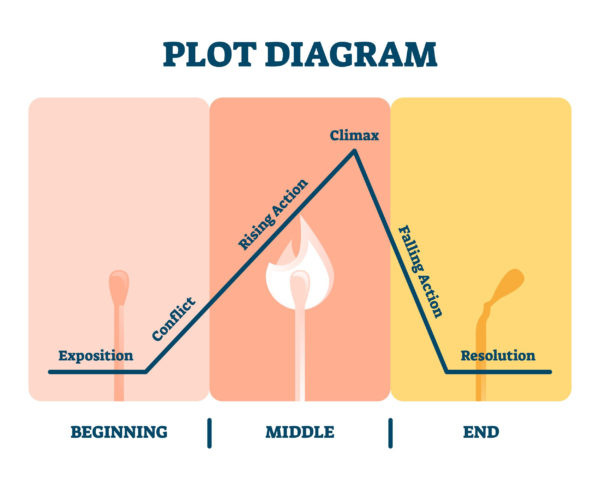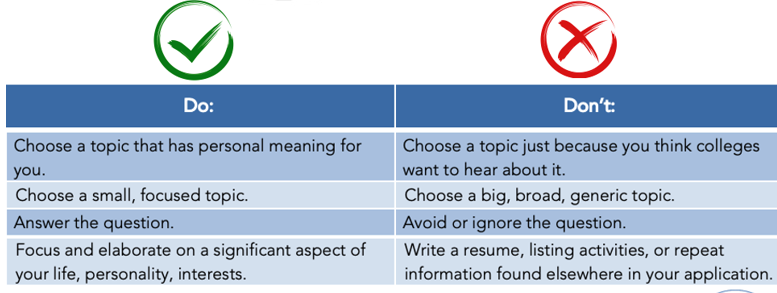 In Part I of our blog series on the Personal Essay for College, we discussed how to brainstorm the best topics for YOU – topics that will differentiate you and convey to admissions officers significant aspects of who you are. In this blog post, Part II: Narrative Structures, we provide you with a variety of ways to organize your story in the most effective way possible!
In Part I of our blog series on the Personal Essay for College, we discussed how to brainstorm the best topics for YOU – topics that will differentiate you and convey to admissions officers significant aspects of who you are. In this blog post, Part II: Narrative Structures, we provide you with a variety of ways to organize your story in the most effective way possible!
Overall Guidelines
When writing, use the following approaches in telling your story so that your narrative can be as effective as possible:
- Hook the reader in your opening
- Be counter-intuitive
- Be specific
- Show, don't tell
- Use your own voice
Narrative Structures
We know that it's difficult to get started with your essay! Here are some tried-and-true models we share with our students to help them build a compelling essay.
Narrative Arc
This is perhaps the most common and effective essay structure. The concept may already be familiar to you from English class if you've ever discussed the Hero's Journey. In essay-writing, the elements are the same, though the content will of course differ (since this will be a short work of personal nonfiction, not a novel). The different parts of the essay include:
- Exposition: Intro to the story, like the opening scene of a story, book, movie. Set up the characters, setting, mood, time. Typically, YOU are the main character!
- Conflict: The primary issue/problem/challenge/obstacle that drives the plot of the story.
- Rising action: The events that lead to the climax, including character development.
- Climax: The turning point for the main character, where the situation/problem is at its most extreme; this is the most exciting point of the story.
- Falling action: The result of the climax, including character development, growth, realizations, questions answered, wrapping-up of plot.
- Resolution: Completion of the story. Tie up loose ends, discuss how the situation has changed. End up at a different point than where you started.
Here's an example of such an essay:
Exposition: A young girl goes into the water with her older sister.
Conflict: She is terrified of the water.
Rising Action: Her older sister teaches her how to swim and compassionately calms her fears.
Falling Action: The girl becomes an excellent swimmer, learns how to handle obstacles and anxiety.
Resolution: She becomes a lifeguard and teaches young children how to swim.
Your essay, however, may not be about a single, defining story, in which case it may be better suited by one of the two organizing frameworks below.
Three-Legged Stool
 This essay structure involves a main idea and several supporting details. Your main idea, metaphor, or theme is the seat, and it's best supported when at least three anecdotes or examples support it.
This essay structure involves a main idea and several supporting details. Your main idea, metaphor, or theme is the seat, and it's best supported when at least three anecdotes or examples support it.
Here's an example: A boy is fascinated by the Rubik's cube, becomes an expert, and competes in national contests. His goal is to solve the cube in under 10 seconds. The three legs are three aspects of his approach and experience, including: his love of research and analytics, which he applies to solving the Rubik's Cube; the sense of community he feels with Cubers around the country; and his work ethic to persevere through obstacles.
Snowball
 This essay formula chronicles the development of an interest or engagement with an activity. The essay unfolds in chronological order and culminates in self-actualization.
This essay formula chronicles the development of an interest or engagement with an activity. The essay unfolds in chronological order and culminates in self-actualization.
Here's an example: A boy visits the small, impoverished town in China where his mother grew up and spends a week tutoring children. He enjoys it so much that he returns the next summer to spend a month as part of a national tutoring program. This experience is so rewarding that he becomes President of the national organization and builds it up so that more U.S. students are now tutoring more children in China.
Do's and Don'ts
For a summary of a few salient do's and don'ts in writing your personal essay, see the following chart:
Applying to college is a complex process and every component requires thoughtful consideration, Here at Collegiate Gateway, we are always happy to answer your questions about all aspects of the college admissions process, including the Common App, resumes, recommendations, interviews, video submissions, and more. Visit our website to set up a complimentary consultation to learn about our services.


